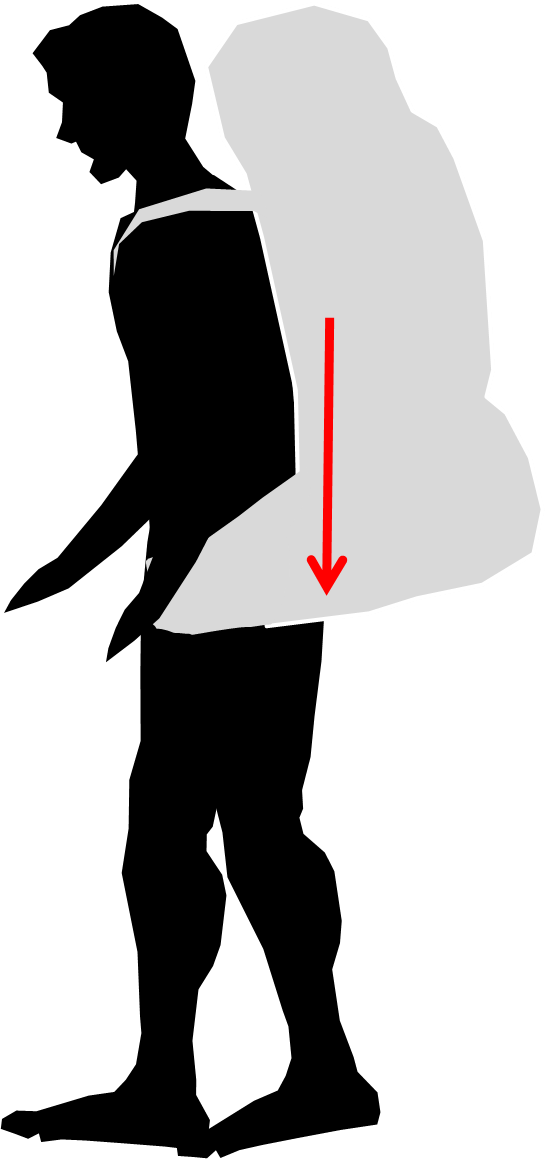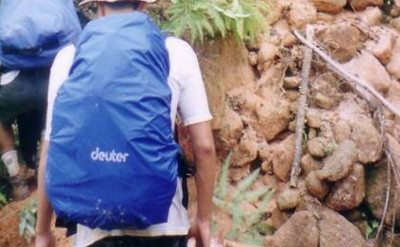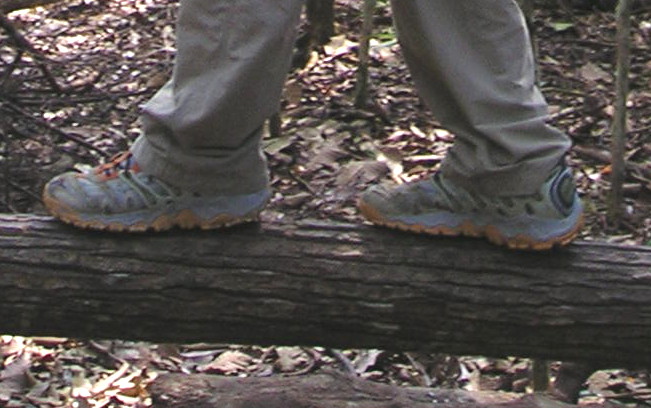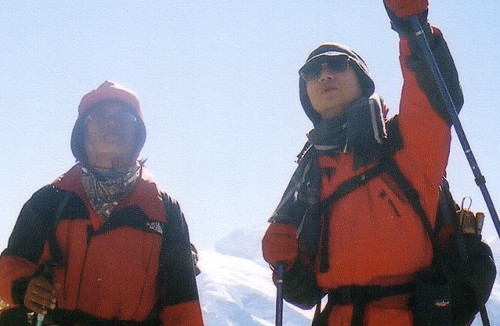On a trek, the wieght or load of the backpack may be on your hips, back or shoulders. Generally the shoulder muscles are not able to take on the full weight of a heavy backpack over extended period of time. Your hip bones are better able to take on the weight and share the bulk of the load instead of relying only on your shoulders. By tightening and loosening various straps, the load of the backpack can be shifted slightly forward, backwards and on your hips, back or shoulders so that you can travel longer distance without tiring.
During uphill trek, your natural tendency is to bend slightly forward to take each step. The load of your backpack is supported by your shoulders, back and hips. Your hip belt should also be slightly loosened so that there is less restriction of movement during the uphill step. Tightening the load-lifter straps (straps close to the top of your shoulders) will keep the backpack close to your body and shift the center of gravity forward during the ascent. This also helps to keep the center of gravity of your body together with the backpack over your hips during the step up which makes balancing easier.
On a flat terrain or during downhill trek, your body posture will be more upright. The load of the backpack is off your back and will be transferred to your shoulders unless you deliberately shift the load to your hips via the hip belt. Tightening the hip belt while slightly loosening the load-lifter straps will facilitate transferring of the load to your hips. This reduces the pressure from your shoulder muscle while your hip bone takes on the load enabling you to travel further.

|

|
|
| Load of backpack is on your back during uphill trek. Note that the center of gravity passes through the hips making balancing easier. | Downhill or on level ground, the load of the backpack is off your back. |
As the first step, it is important that the backpack harness fit your body to allow efficient carrying and transferring of load to your body. Without a good fit, the load may be pulling you backwards when you are going uphill or putting continuous heavy strain on your shoulders instead of your hips on level or downhill terrain.


